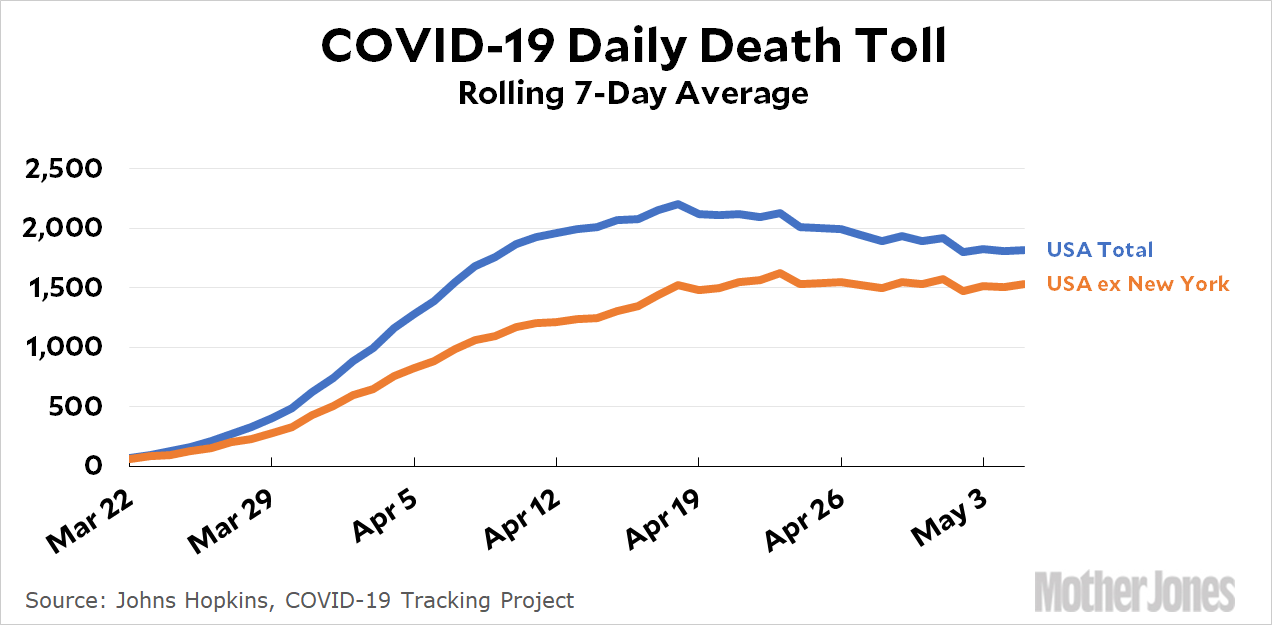Every day I show you the growth rate of COVID-19 deaths in the US. But some people think that’s misleading. After surging in April, deaths in New York state are now declining, and that affects the national numbers. In particular, it makes it look as if our death toll is declining, when it’s really rising everywhere except New York. So how about showing us the national numbers without New York included?
Fine. Here it is:

Now let’s talk about whether it’s a good idea to look at things this way. I’m skeptical. In nearly every dataset there are one or two points that are really high and pull up the average. And it’s always tempting to pull those out. Aside from Texas, oil production in the US is down. Aside from Los Angeles, air quality is getting better. Etc. But there’s always a highest data point. And the average always comes down if you can dream up some reason to exclude it. In the case of COVID-19, that happens to be New York today. But tomorrow it might be Florida. Then Illinois. Who knows? Should we always exclude whichever state is rising or falling the fastest?
I don’t think so. I’ll grant that it’s interesting to look at the trendline without New York, but I’m not sure it’s justifiable. It’s better to look at the full set of numbers and just chart the ups and downs. Alternatively, it’s also fine to look at states on their own to see who’s doing well and who isn’t.
One other thing: there’s an op-ed in the New York Times today showing the COVID-19 toll with and without New York, but it’s showing new cases, not new deaths. I continue to think this is probably highly misleading since different states have vastly different testing regimes. If, say, New York is testing 1 percent of its population and Florida is testing 0.1 percent, then New York will overwhelm the total regardless of who’s going up and who’s going down. Likewise, as testing becomes more widespread, looking at cases over time becomes unreliable even within a single state. The case rate can look like it’s skyrocketing just because we’re testing far more people.
I do think we have to look at case counts, and we have no choice but to use the numbers we have. However, they should be taken with a very big shaker of salt.
















